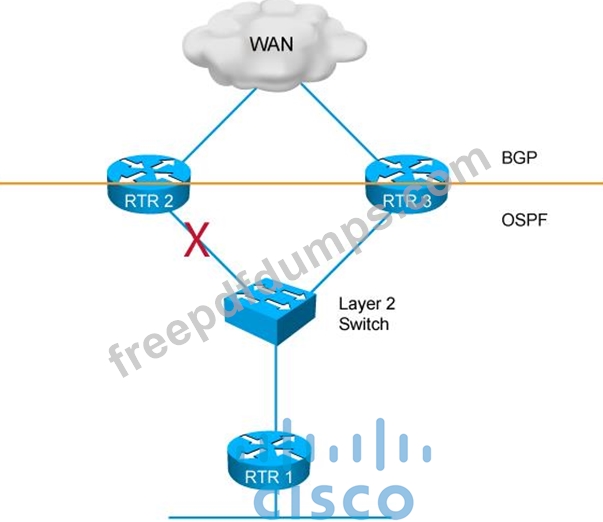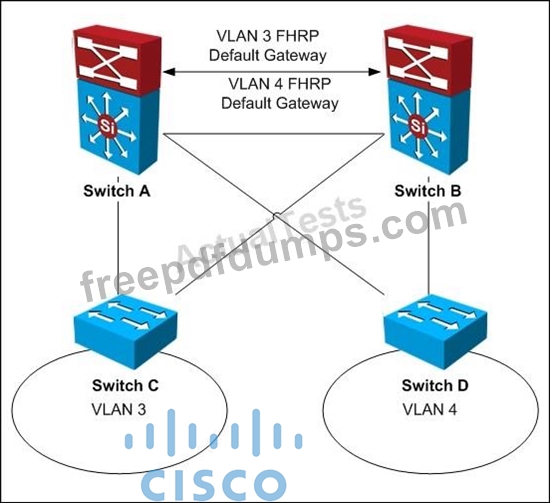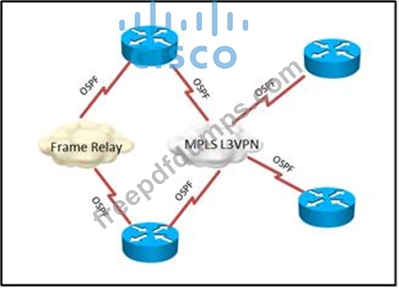352-001 Exam Question 101
Refer to the exhibit.

RTR 1 uses RTR 2 as the primary WAN exit point. When a failure occurs in the link connected to RTR 2 LAN, it takes about 40 seconds for RTR 1 to use the backup path via
RTR 3.
Which two mechanisms can be used independently to improve the failure detection time to
1 second or less when RTR 1 failover to RTR3? (Choose two.)

RTR 1 uses RTR 2 as the primary WAN exit point. When a failure occurs in the link connected to RTR 2 LAN, it takes about 40 seconds for RTR 1 to use the backup path via
RTR 3.
Which two mechanisms can be used independently to improve the failure detection time to
1 second or less when RTR 1 failover to RTR3? (Choose two.)
352-001 Exam Question 102
Which OSPF design consideration, with regards to simplicity and address preservation, must be considered when connecting two Layer 3 switches directly using 10 GBASE-T cabling and formatting an OSPF neighbor adjacency?
352-001 Exam Question 103
The Database team will deploy a new clustering technology that uses IPv4, multicast-based data replication, where the servers listen and transmit at the same time on multiple groups. Multicast is not being run on the current network and there are no plans to enable it. New Layer 2 switches will be purchased to connect new servers in order to keep multicast traffic off the existing network. Which two features should the new switches support to provide good multicast performance? (Choose two.)
352-001 Exam Question 104
Refer to the exhibit.

If IEEE 802.1w is in use for this network design, what are two locations where spanning-tree root can be placed to ensure the least-disruptive Layer 2 failover for clients within VLANs 3 and 4? (Choose two.)

If IEEE 802.1w is in use for this network design, what are two locations where spanning-tree root can be placed to ensure the least-disruptive Layer 2 failover for clients within VLANs 3 and 4? (Choose two.)
352-001 Exam Question 105
Refer to the exhibit.

An enterprise is migrating its single-area OSPF network from a Frame Relay WAN service to an MPLS L3VPN service. Frame Relay will remain in only a few sites that require increased resiliency via two different WAN connections.
Which feature could be used in the?
MPLS VPN service provider network to support the design requirement by ensuring that during normal operation, intersite traffic will only use the MPLS VPN service and not the old
Frame Relay service?

An enterprise is migrating its single-area OSPF network from a Frame Relay WAN service to an MPLS L3VPN service. Frame Relay will remain in only a few sites that require increased resiliency via two different WAN connections.
Which feature could be used in the?
MPLS VPN service provider network to support the design requirement by ensuring that during normal operation, intersite traffic will only use the MPLS VPN service and not the old
Frame Relay service?

